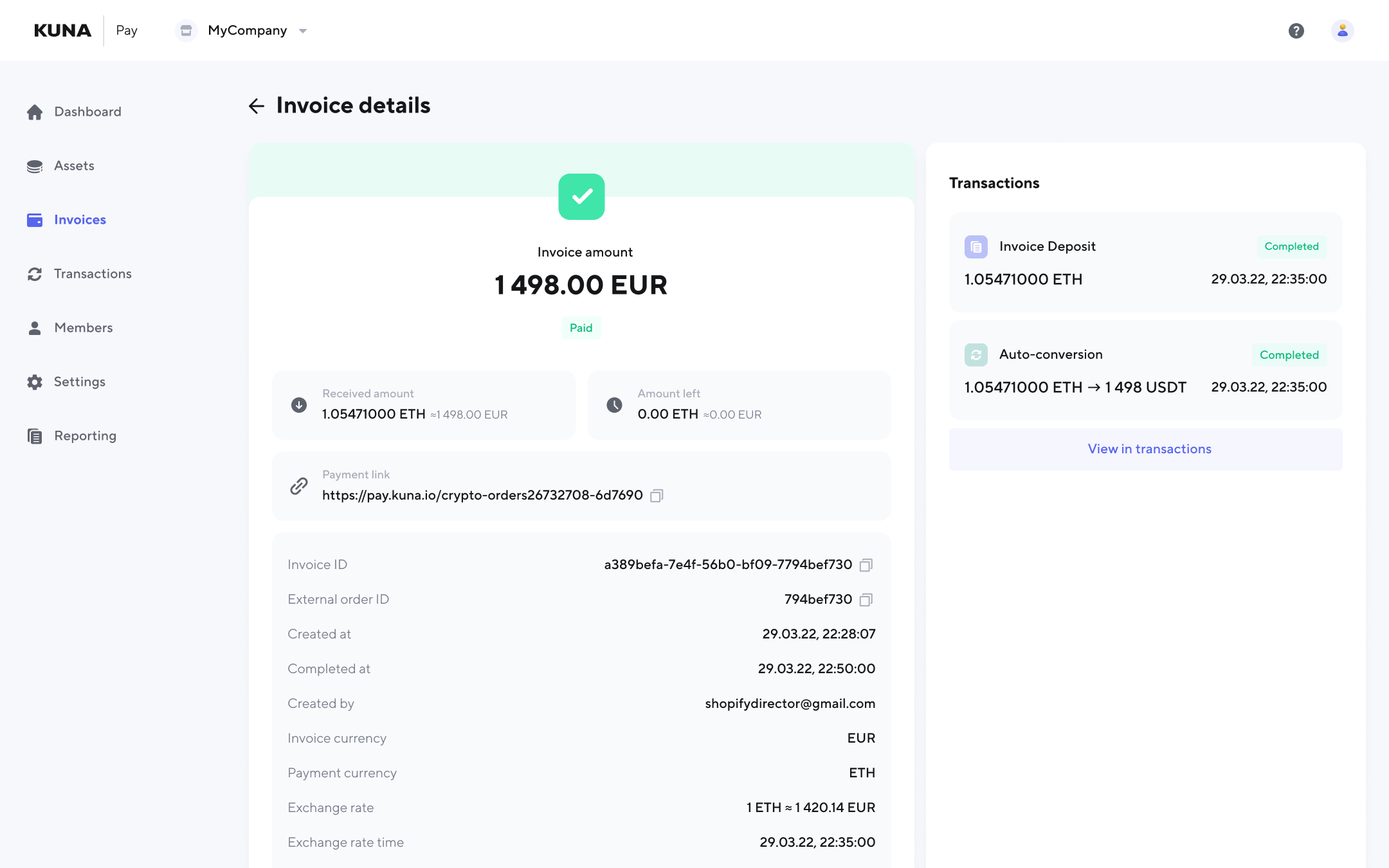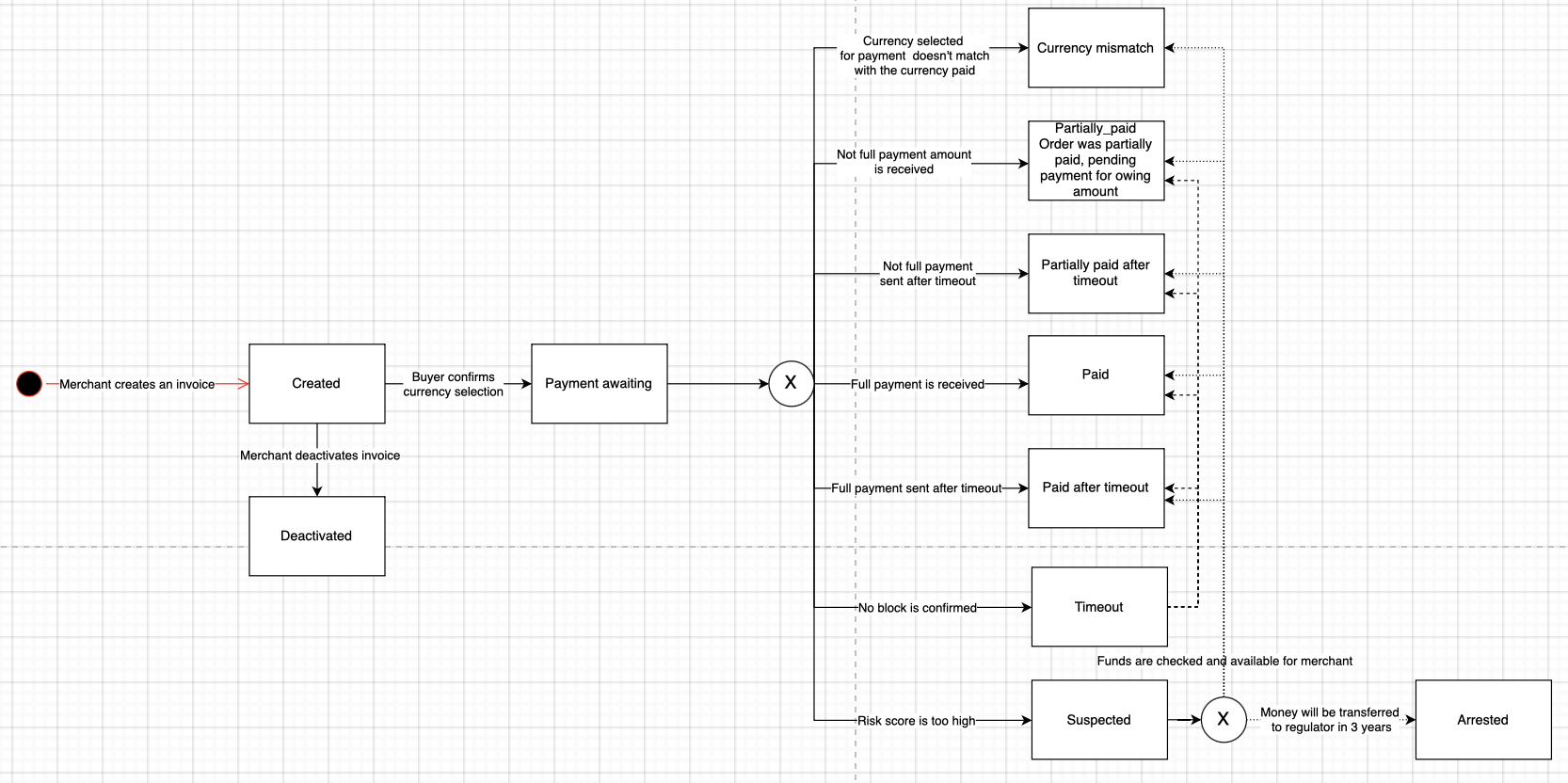Invoices
Includes a detailed explanation how to generate invoices for either B2B or B2C customers
Create an invoice in the merchant cabinet
Create an invoice

To create an invoice in the merchant cabinet, simply login to your account and click on the "Create Invoice" button in Invoices. From there, you can enter the invoice details, including the payment amount and currency, and any additional notes or comments. If you would like to have the payments converted into EUR or USDT automatically, then you should turn on the auto-conversion in Settings, check the details Auto-conversion
View the invoice details
Once you've created an invoice and sent it to the buyer, the buyer can make the payment using their preferred cryptocurrency, and the payment will be processed and credited to your account.

Deactivate an invoice
You have the option to deactivate any links before the buyer initiates a payment, particularly when a payment is no longer required. This feature ensures that unnecessary transactions can be prevented or halted, offering you greater control and flexibility in managing your payment processes.

Who can deactive invoices?The capability to expire links is vested in the roles of owner, admin, and support, enabling comprehensive control over all links. For agents, the authority extends solely to expiring the links they have personally created, ensuring a more targeted and secure link management system.
Invoice status flow

Other good-to-know features
- You can customize your invoices by adding your logo and contact information which will be available during invoice payment.
- The KUNA Pay platform allows you to affect the exchange rate during customer purchase and affects the price which is shown for buyers in cryptocurrency. Check details: Correction coefficient
Effortlessly dispatch invoices to customers globally, allowing them the convenience of settling payments using their preferred cryptocurrencies.
Create an invoice via API
Updated 11 months ago
